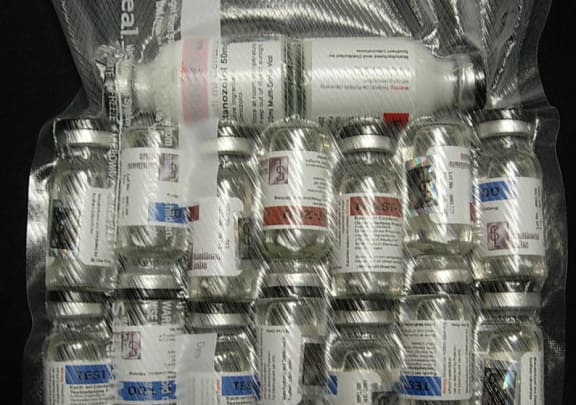By Alison Ballance
Alison Heather has very firm opinions about people taking steroids to enhance their sports and exercise performance.
“I’m not for it at all. Any form of doping agent I’m not in favour of, simply because I know what damage it can do to your body. Doing the ultramarathons and the Ironmans that I do, we’re already putting our body at risk. To then put foreign agents into our bodies, you’re accelerating that risk. I’m totally against it, and a big advocate for anti-doping campaigns.”
And when she says this, Alison Heather - who competes in Ironman and ultra-marathons - is not talking just as a sports person. The University of Otago physiologist researches sex hormones and their effect on coronary heart disease, so she knows exactly how steroids such as male androgens affect the human body.

Capsules of various anabolic steroids collected during a drug-bust by the US Drug Enforcement Administration. Photo: Wikimedia Commons
In females, the sex hormones are oestrogens, and in males they are androgens, including testosterone and di-hydro-testosterone.
It’s well known that oestrogen produced in a woman’s body is protective against heart disease, and that as oestradiol levels drop following menopause women become more likely to suffer heart attacks or strokes. Large well-known trials of post-menopausal women on hormone replacement therapy also showed that taking oestrogen as a supplement led to higher rates of heart disease and strokes. Research by Alison and colleagues unravelled the mechanism behind this effect.
“Oestradiol, taken in a tablet form in older life actually causes accelerated calcification or hardening of a plaque,” says Alison, “And this leads to a more likely chance that the plaque in an artery will rupture, causing a myocardial infarction or a stroke.”
While it has been difficult to study the physiological effects in humans of taking male sex steroids (as sports doping is very much a hidden affair), work in Alison’s lab using mice has drawn a very clear picture.
“We’ve shown that in male mice that are given high dose androgens we see an increase in coronary heart disease and an increase in the hardening of these plaques. So there is a link between taking a sex steroid exogenously and putting it into your body in older life or in high doses, and an acceleration in coronary heart disease.”
Anti-doping agencies have well-developed techniques that use gas chromatography and mass spectrometry to detect natural androgens such as testosterone and di-hydro-testosterone. However, these methods only work when the molecular structure is already known, and there is a lucrative trade in developing and selling novel designer androgens that evade normal tests.

Alison Heather has developed bio-assays to detect designer steroids that rely on them binding to the human androgen receptor (seen here in this ribbon diagram binding to testosterone), thus showing androgenic activity. Photo: 10.1110 / ps.051905906 Wikimedia Commons
To get around that Alison has developed bio-assays that highlight if a sample is having an androgenic effect by their ability to switch on the androgen receptor.
Alison has been involved in screening samples that concerned parents or coaches have collected, in an effort to find out whether they contain illicit steroids. She was also involved in screening a large number of nutraceutical products, such as protein muscle builders and fat burners, which are readily available on the internet. What they found was that many of the products that claimed to have certain levels of steroids often contained much lower levels. More concerning was finding steroids in products that didn’t declare any such content.
“What we found is that in around 10-16% of these products we can detect an androgen,” says Alison. “So this is a concern because these are products that don’t declare they contain an androgen, and so people may be taking them not being aware they’re taking an androgen that may have potential health risks. It’s also a risk for an athlete taking them, as they could potentially test positive [during sports doping tests].”
Drug Free Sport New Zealand is New Zealand’s national anti-doping organisation.

